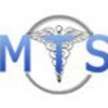Top Tips For Physical Therapy Documentation
Healthcare organizations and medical practices are investing in physical therapy transcription services to ensure accurate physical therapy records.

Physical therapy documentation is important because it helps to track a patient's progress, communicate with other healthcare providers, and ensure compliance with insurance and legal requirements. Proper documentation also allows for continuity of care as it provides a clear record of the patient's history and treatment plan. Without proper documentation, patients will not receive the full extent of treatment they deserve. This is why healthcare organizations and medical practices are investing in physical therapy transcription services to document accurate physical therapy records.
Physical therapy documentation involves keeping a written record of all services provided, as well as the current diagnosis, treatment status, and other pertinent information on patient care. In a medical practice, physical therapy documentation plays two key responsibilities. To sustain high-quality care, it is important to have enough documentation to track functional outcome metrics over the course of an entire episode of care. Second, paperwork helps obtain the proper payment for these services. State medical boards mandate that physical therapy clinics keep a "accurate, current, and complete medical record" for every patient who received care for a minimum of seven years following treatment. Services that were not properly or not at all documented will not be paid for and may also result in legal repercussions.
Importance of Physical therapy documentation
Having thorough records of your physical therapy sessions is crucial for several reasons:
• Provide the best care: Keeping accurate records of their initial state and their progress toward recovery will help patients obtain better care from you and other healthcare professionals involved in their care. On the other hand, incorrect or incomplete notes can result in undesired or even harmful consequences.
• Maintain continuity of care: Up-to-date medical records will make it easy for a patient's new healthcare practitioner to come up with a successful treatment plan if they begin working with your patient.
• Accurate billing: Keeping proper records is essential to create accurate invoices and insurance claims for your services, as well as proving which services you provided in the event that a bill is contested.
• Prevent malpractices: Documentation is admissible in a court of law. If you ever find yourself in a legal situation, having thorough and accurate documentation of your physical therapy sessions will support your claim that you met or surpassed the standard of care.
• Manage the treatment plan more efficiently: Physical therapists and therapist assistants can deliver better-targeted care and spend less time getting up to speed on each patient visit by keeping a record of all initial assessment data, formal diagnoses, and treatment attempts.
Documentation tips:
• Be concise and precise without losing crucial details: When feasible, use lists or bullet points. This facilitates recalling of the conversation and can speed up the process of recording patient data. Ensure that the medical note has all necessary details. By keeping the note focused and organized, you can create a specific flow. Additionally, use standard terminology and concepts throughout the text to make it simple for coworkers and referring doctors to understand.
• Keep a record of all your therapeutic efforts: To avoid problems with your claim, never list the billing code for therapeutic activities without describing the services you've provided. Document the billing code, the body part(s) treated, the muscles and joints targeted, and the precise activities carried out, such as isometric or isokinetic workouts.
• Identify compliance requirements and follow them: All physicians should be aware that, when it comes to compliance, there are a number of laws and regulations. It can be challenging to compile documentation in a way that enables you to get reimbursed quickly given state laws and payer restrictions. It is strongly advised that service providers use reliable, authentic sources to make sure they are aware of any changes. Following a thorough understanding of compliance standards, providers should decide how can reduce the likelihood of incorrect documentation.
• Save time by using EMR shortcuts: A physical therapy team may find physical therapy paperwork to be time-consuming and confusing. Therapists need a system that can enhance their practice's overall productivity while also saving them time and anxiety when entering complex billing codes. Practices should employ electronic medical record (EMR) software to streamline all procedures related to physical therapy documentation. Modern physical therapy EMR solutions provide practical features, including shortcuts, that make physical therapy paperwork easier.
• Avoid over-documenting by removing any unnecessary details: Over-documentation is a frequent issue with physical therapy records. Many PT professionals spend a lot of time writing out lengthy notes that aren't really essential because they mistakenly believe that all patient information must be recorded. While the majority of intake, diagnosis, and treatment information should be included, things not specifically connected to the care of the patient should be left out of physical therapy paperwork. Remember that documentation outlines the services you're billing insurance for and directs patient care should they transfer physicians. It is most likely irrelevant if it is not medical.
• Plan to Document Point-Of-Service (POS): Many physical therapists believe that talking to patients while taking notes can negatively impact care, leading them to spend additional unpaid hours on documentation at the end of a long workday. This can affect overall retention efforts and increase the chance of documentation errors. POS documentation should be the goal instead, especially when a patient's feedback is crucial to therapy recommendations. For instance, tell a patient why their input is valuable and how important physical therapy SOAP notes are. Then, without affecting the focus and empathy in one-on-one care, you can talk to patients and record their problems at the same time.
Partnering with a reliable physical therapy transcription service provider is a practical option for busy providers to ensure accurate records of physical therapy services, increase productivity, boost profitability, and improve patient outcomes.
About the Creator
Medical Transcription Services
Medical Transcription Services is a reliable medical transcription company in the USA, provides transcription to healthcare clients across the United States and worldwide. https://www.medicaltranscriptionservicecompany.com/






Comments
There are no comments for this story
Be the first to respond and start the conversation.